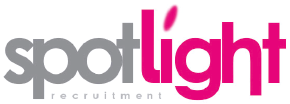“You can never be overdressed or overeducated”, a helpful mantra worth repeating when the memory of the time you drastically misjudged the dress code of a friend’s party paralyses you; everyone else was in jeans, you sauntered in dressed to the nines and slunk out at sixes and sevens. However, Oscar Wilde’s famous words can bring little solace in a professional setting: like it or not, the way you dress is important.
The recent furore surrounding Theresa May’s trousers is yet more evidence that the importance of what one wears cannot be underestimated. In case you missed it, the Prime Minister was criticised for wearing leather trousers that cost £995. Some might argue that given the shiny brown nature of the flared trousers, the price tag was the least offensive part of the article of clothing in question.
“Dress for the job you want, not the job you have”, this is another well trotted-out cliché; turning up to work in your underwear because you have career aspirations as a Victoria’s Secret Angel is more likely to warrant a written warning than earn you your wings. Whilst a suit and tie used to be standard practise, there has been a revolt against this in recent years and your bespoke suit might be speaking before you even open your mouth: the suave suit styling city slicker look is not the suitable sartorial style for every environment. A 2011 study by First Direct found that only 10% of British workers regularly wear a suit to work, with many offices now favouring a more casual style of dress.
Eccentric entrepreneur Steve Jobs was renowned for his uniform of jeans paired with a black turtleneck and trainers. President Obama’s decision to dress in only blue or grey suits is due to his desire to limit the trite decisions that can corrupt pertinent ones: “He mentioned research that shows the simple act of making decisions degrades one’s ability to make further decisions. It’s why shopping is so exhausting”. Religiously sporting a grey t-shirt has become ubiquitous with Facebook’s CEO, Mark Zuckerberg. His decision to dress casually is emblematic of a generation of young people who simply don’t want to wear a suit to work.
In a corporate environment, however, a smart dress code is often mandatory. Back in May, the story of a Receptionist who was sent home for refusing to wear heels made headlines. Uncomfortable though they might be, some corporate companies do expect female employees to wear heels, which for some is not a problem and for others is a heel-breaker. Although potentially annoying, it isn’t illegal to dismiss an employee who fails to dress in accordance to ‘reasonable’ standards.
Dressing appropriately for an interview is imperative; various studies concerning the length of time it takes for someone to form an initial impression have been conducted. It reportedly takes a mere seven seconds for a judgement to be made. And while judging others based on outward appearances might seem callous, you don’t get a second chance to make a first impression. With that in mind, it’s advisable to err on the side of caution with interview attire. If company is corporate and the interview is a formal one, then dressing one ‘notch’ above everyday work wear is a good rule, for men and women that often means a suit. A less corporate environment often employs a business casual dress code, but make no mistake, casual does not mean cosy. Trainers, jeans, or t-shirts are usually inappropriate for an interview.
At Spotlight Recruitment we advise successful candidates on the ‘type’ of interview to expect so that they can dress accordingly. The enigmatic Steve Jobs could get away with dressing how he pleased, but if you want your job hunt to be successful then dressing the part will certainly help. And so, put your best smart shoe clad foot forward and have a look at our job vacancies page!

